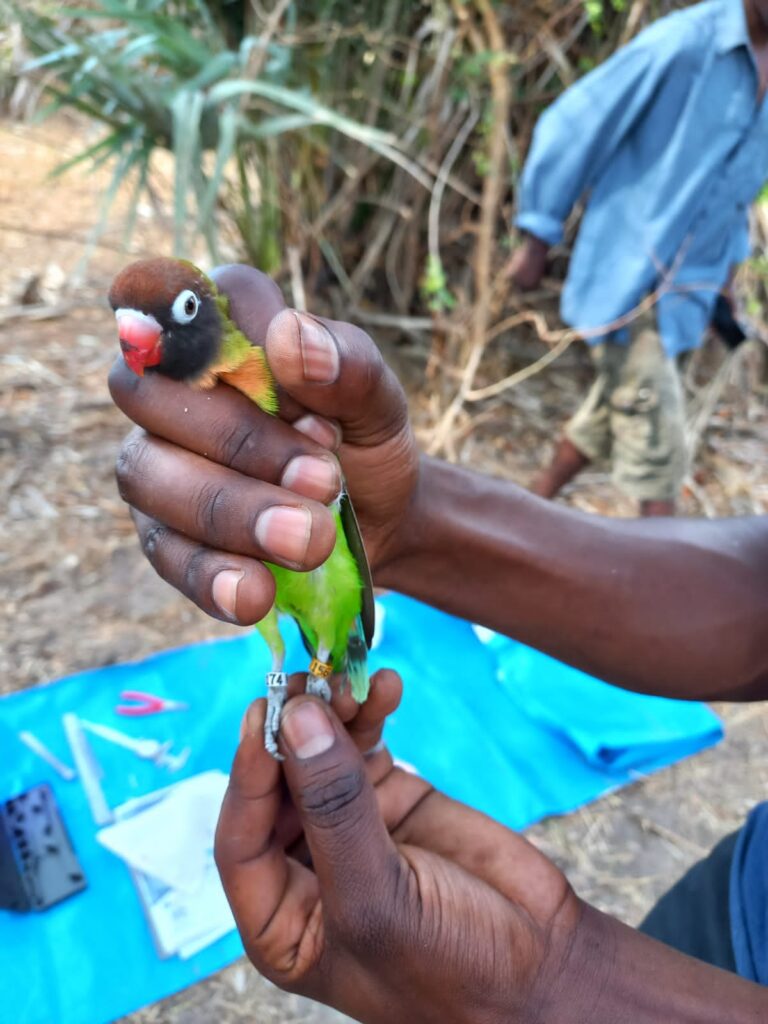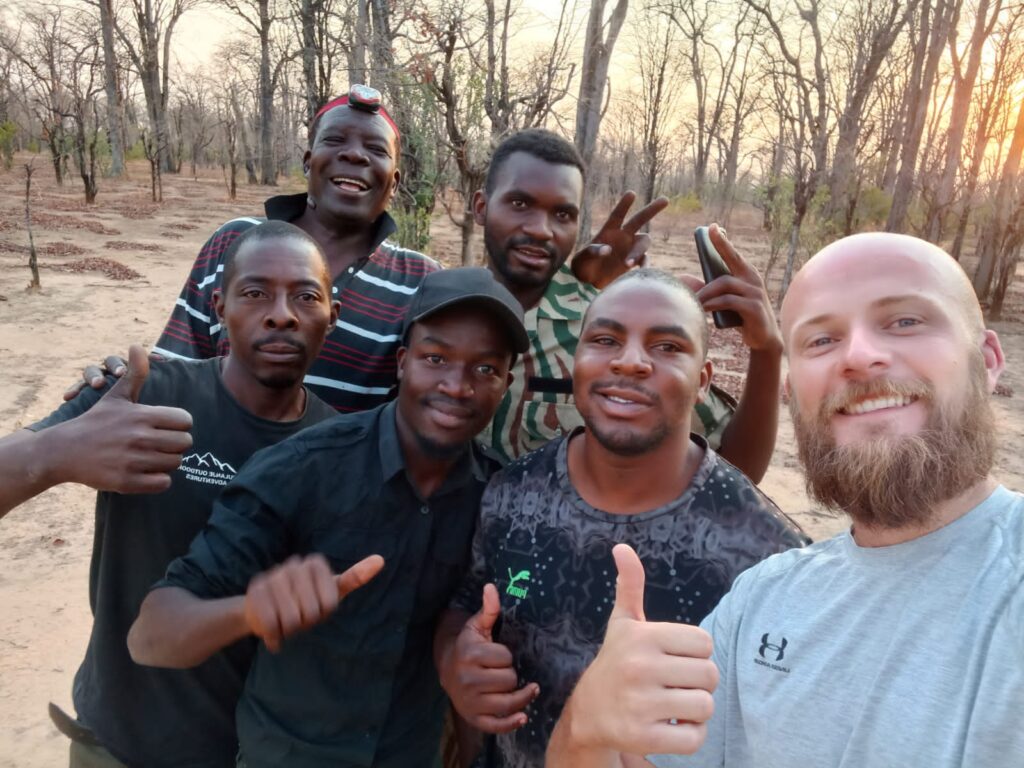The Lovebird Adventure with World Parrot Trust

The Lovebird Adventure with World Parrot Trust
By Swithin Kashulwe
Lovebirds are undoubtedly among the cleverest and most adorable parrot species in the world. Of the nine species of lovebirds in the world, Zambia is home to two – the Black-cheeked Lovebird found in Western Province (Magumwi village) and Kafue National Park, and the Lilian’s Lovebird found in Mfuwe (South Luangwa National Park) and the Lower Zambezi National Park. These lovebirds live in small cavities of the Mopane trees, although it is suspected that they could also be living in other tree species other than the Mopane.
At the end of October 2021, I joined the World Parrot Trust on a Lovebird survey across four of Zambia’s Key Biodiversity Areas (Machile, Kafue National Park, South Luangwa National Park and Lower Zambezi National Park). The team was a composition of Sascha Dueker, the Lovebird Conservation Coordinator for Southern Africa from the World Parrot Trust, Patrick Katundu a professional climber from Mulanje Outdoors Adventure in Malawi, Dominic Mubika from Kamunjila Safari Lodge in Livingstone and myself.
This thrilling adventure started in Magumwi village in Mwandi District of Western Province on Wednesday 27th October 2021. At arrival in Magumwi, we proceeded directly into roost checks for the Black-cheeked Lovebird in readiness for trapping the following day. The initial methodology to trap the Lovebirds at their roosting sites proved futile in Magumwi. Therefore, the team strategized and agreed to identify places where Lovebirds were congregating during the day and resorted to using the mist netting method.
This being my first up close experience with birds, I was thrilled with the whole process of handling and ringing the birds. What was not revealed to me was that lovebirds actually bite, Ouch! Certainly, you wouldn’t want to mess with them and that remained Sascha’s little secret. Therefore, the whole excitement was spoiled by the pain from the first Lovebird bite. Nonetheless, the pain was worth the experience. With the mist net method, we managed to capture and take samples from 11 black-cheeked lovebirds in Magumwi.

From Magumwi, we proceeded to the North side of Kafue National Park in Nanzhila. The late entry into the National Park, without good knowledge of the state of the road network, awarded us with three points for getting stuck in the sand patches. In KNP we were joined by Chaona Phiri, PhD student who is doing her studies on the black-cheeked lovebirds. We employed the same strategy of roost checks, mist netting and identification of roost sites. The lovebirds in KNP were skittish, we only managed to capture and ring eight birds over the seven-day period of our stay.
Furthermore, the team embarked on a long journey to the East, to one of the greatest wildlife sanctuaries in the world – South Luangwa National Park in Mfuwe in search of the Lilian’s Lovebirds. The 12-hour journey from Lusaka to Mfuwe was the longest journey I have ever been on since I was born, the distance was something else. The heat of the valley was not helpful. The late arrival to pitch tents, preparing dinner before getting some rest seemed to take forever to accomplish.
The following morning in SLNP was characterised by checking for roost sites and potential waterholes where the Lillian’s Lovebirds could be congregating for water. Just when we thought the Black-cheeked in KNP were difficult to capture, we found ourselves sweating to capture the Lilian’s in South Luangwa. On the first and second day in South Luangwa, we were joined by Edward Selfe and Gareth, very helpful gentlemen, passionate birders who were so keen to learn about what we were doing. Unfortunately, during this time we did not capture any lovebirds. In South Luangwa, we managed to capture 5 lovebirds before moving to the Eastern side of Lower Zambezi National Park in Kulefu. Just like South Luangwa, lovebirds were so difficult to capture in Lower Zambezi, we only managed five.
It was a thrilling adventure which was characterised by encounters with hippos, elephants and lions whilst braving the scorching hot weather to get the job done. However, waking up and leaving camp at 3am in National Parks full of dangerous wild animals to trap lovebirds was the scariest part of the adventure. You stand there in darkness in the middle of the tall Mopane trees not knowing what could come in front or behind you, the moment you want to get rid of all those negative thoughts, then you hear the lions roaring a few metres away. But guess what! We all came back safe and sound. These memories remain fresh, and I would not forget all encounters with wildlife, the beautiful landscapes of the Kafue, Lower Zambezi and South Luangwa National Parks and the wildlife. The highlights of this adventure for me were learning the pull technique for mist netting and how to remove birds from the net as well as ringing among others.
In conclusion, I wish to reiterate that meeting new people and visiting many different places, some of which I have never been to and being part of the Lovebird survey was a very memorable experience that I would love to do over and over again without giving it a second thought.

